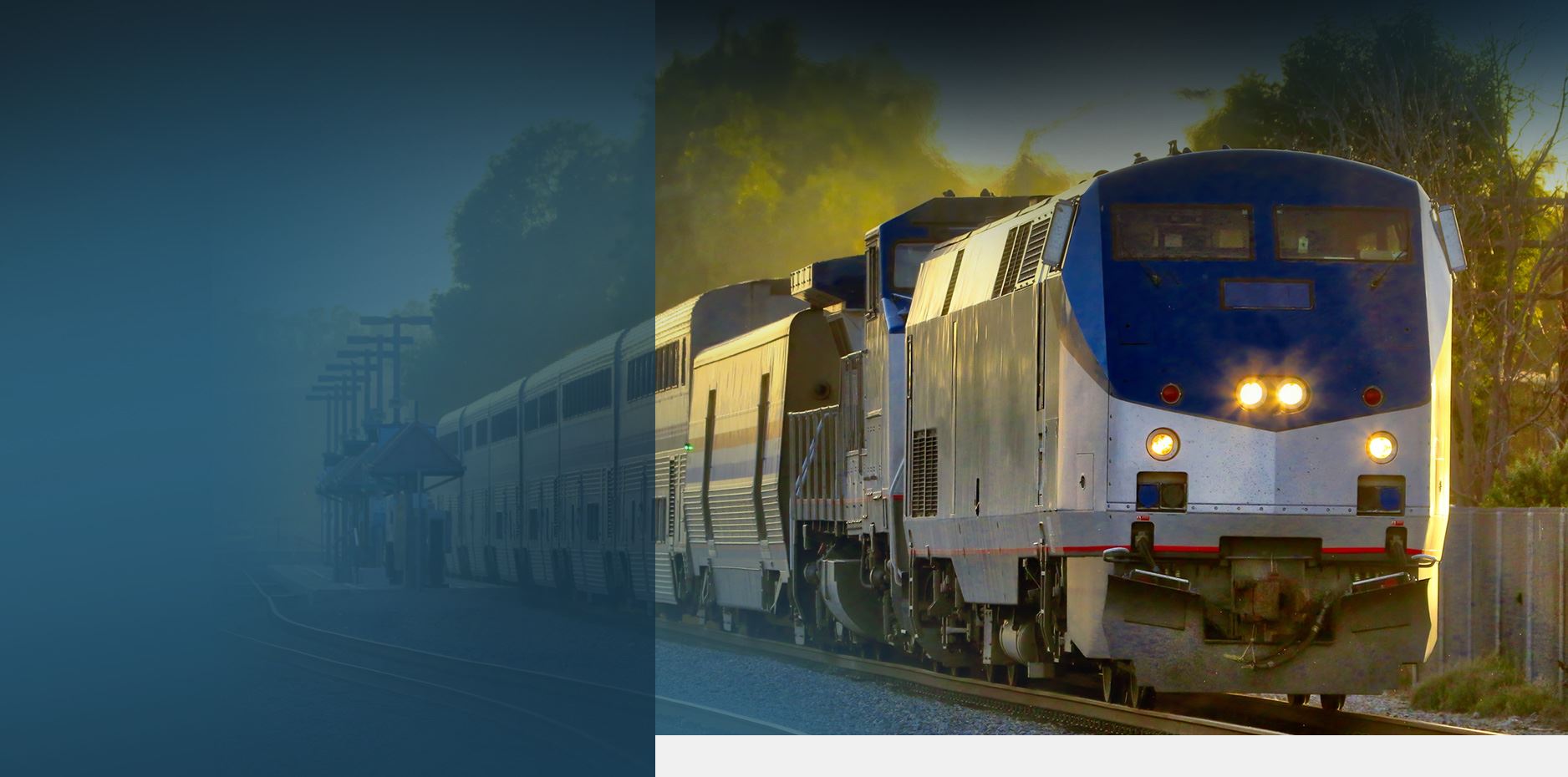
Train Safety
Below are investigative reports as well as important resources and information collected to provide guidance in the ongoing fight to prevent train accidents, improve train safety and obtain justice for victims.
Articles
In this Pulitzer Prize winning series, Walt Bogdanich reviews the many issues surrounding railroad safety, specifically train crossing accidents, the railroad industry’s behavior concerning train wrecks and the relationship between the Federal Railroad Administration and the railroad industry.
Part One: In Deaths at Rail Crossings, Missing Evidence and Silence
In the first installment of the investigative report published by The New York Times, the authors detail numerous shady actions surrounding the railroad industry’s response to train crossing accidents. The author found a severe lack of investigation, destruction of evidence and families of victims left without answers as to the cause of a crash. With the power to investigate train crossing accidents left to federal authorities, only a small percentage of wrecks are investigated each year.
Part Two: A Crossing Crash Unreported and a Family Broken by Grief
The second installment describes the unfortunate death of Hilary Feaster whose life could have been saved if CSX had complied with federal rules and reported the death of two other teenagers at the same train crossing four years earlier. The investigation also reveals the problematic ties between the railroad industry and government regulators that often results in a lack of enforcement and punishment and leaves little incentive for the train companies to avoid what they call “mistakes.”
Part Three: Amtrak Pays Millions for Others’ Fatal Errors
In train wrecks, derailments and train crossing accidents, CSX and other major freight railroads have used their heavy lobbying weight to avoid culpability and insist Amtrak shield their profits according to Part Three of The New York Times series. As a condition for using the freight lines’ tracks, the federal government requires Amtrak to pay liability claims if they are involved in a train crash, even if the freight lines are responsible for track maintenance and the crash can be traced to maintenance issues and even egregious and “almost criminal” negligence by the freight rail companies. Since Amtrak is a hybrid public-private entity that is subsidized by taxpayer funding, the money being paid to victims doesn’t come from the corporation profiting from the use of the tracks, which minimizes any incentive they have to make tracks safe.
Part Four: For Railroads and the Safety Overseer, Close Ties
The fourth installment examines the close relationships between railroad companies and their federal overseer, the Federal Railroad Administration (FRA). While Betty Monro, who later became the agency’s director, was the FRA’s deputy administrator, she maintained a longtime friendship with Union Pacific’s chief lobbyist Mary E. McAuliffe. Other FRA personnel have gone on to lucrative jobs with railroad companies. Questions are raised as to whether the FRA’s “partnership” approach to safety issues and enforcement has blunted the agency’s ability to enforce safety regulations.
Operation Lifesaver is a nationally known influential rail-safety nonprofit organization, whose mission is to educate drivers on avoiding train crossing accidents and emphasizes driver responsibility for crashes to judges, police officers, elected officials and the news media. This is the same argument used by the railroad industry in their courtroom defense, and evidence shows the organization was founded by a railroad and it gets much of its funding from the industry. Critics say the nonprofit is just another tool the industry uses to shift blame for train wrecks to the public.
Part Six: Questions Raised on Signals at Rail Crossings
While the Federal Railroad Administration (FRA) says that signal malfunctions pose little danger to the public and rarely cause grade crossing wrecks, the New York Times found that at least 400 train crossing accidents involving 45 deaths were caused by signal malfunctions in just a four year period. Despite this, industry spokespeople and accident reports repeatedly downplay malfunctions and place the blame on unsafe drivers instead.
Part Seven: Oversight is Spotty on Rail-Crossing Safety Projects
The addition of lights and gates to rail crossings has decreased the number of fatal accidents in recent years. Unfortunately, the lack of oversight and reliance on the industry to police itself on costs has led to serious issues of overcharging and a skyrocketing cost of installation. Sadly, that high cost has translated into fewer crossings being upgraded or warning devices being installed.
Spending on rail crossing safety upgrades varies widely across Southland
The Los Angeles Times reports on their investigation that found safety upgrades since the Glendale Metrolink train crash have varied from county to county. These differences mean that train passengers, crews, motorists and pedestrians all face varying degrees of risk concerning a potential train crash along the same regional rail network.
Safety of “Push” Trains Faces Renewed Questions After Oxnard Metrolink Derailment
“Push” trains are once again under fire after the Oxnard derailment injured 30 people. This method of transportation includes a cab car at the front, which is lighter than a locomotive. A lighter rail car is more likely to leave the track in a crash because it’s the rail car’s weight and wheel flanges that keep it on the track.
Legislation
Rail Safety Improvement Act of 2008 (RSIA)
This act of legislation was the first bill to reauthorize federal rail safety programs since 1994. It made the following major changes:
- Positive Train Control (PTC): Each railroad carrier is required to submit a plan to implement a positive train control system by December 31, 2018. According to the Association of American Railroads, PTC can prevent a train crash caused by derailments by excessive speed, train-to-train accidents, unauthorized trains on sections of track where maintenance is being performed, and movement of a train through a switch in the wrong position.
- Grade Crossing Safety: States and railroad companies are required to report how train crossings are protected and requires them to help make oncoming trains more visible to drivers and pedestrians to help prevent more deaths. The bill also requires railroads to have a toll-free phone number posted at train crossings so the public can report safety problems more easily.
- Employee Fatigue: To minimize the impact of fatigue on train employees, limits were set on the number of hours crew members can work in a month. Employees are guaranteed at least 10 hours of off-duty time within a 24-hour period and “limbo time,” also known as the time spent traveling or waiting to travel, to and from work.
Passenger Rail Investment and Improvement Act 2008 (PRIIA)
PRIIA focuses on intercity passenger rail. It reauthorizes Amtrak and strengthens the U.S. passenger rail network. Amtrak, the U.S. Department of Transportation, FRA, states and other stakeholders are required to improve operations, services and facilities to help reduce train wrecks.
American Recovery and Reinvestment Act of 2009
ARRA was signed into law by President Obama in 2009 to help jumpstart the economy. Congress also made $8 billion available to help create a national high-speed rail system. Funds were also awarded to Amtrak to help improve security, and make necessary upgrades and repairs.
Wisner Baum Attorney Testimony on Train Safety to the California State Assembly in 2005
Paul Hedlund testified as follows:
The Federal Railroad Administration (FRA) has been working with the (1) Volpe National Transportation System Center (Volpe Center) to conduct research into rail equipment crashworthiness. The approach in conducting this research has been to propose strategies for improved crashworthiness and to apply analytic tools and testing techniques for evaluating the effectiveness of those strategies.
The overall objective of the rail equipment crashworthiness research is to develop design strategies with improved crashworthiness over existing designs.
The two crash tests conducted for Rail Equipment Crashworthiness Research and Passenger Equipment Crashworthiness as seen on the Volpe website, demonstrate existing cab car crash test results and the improved cab car crash test results.
1) The first test is a Fullscale Testing of Passenger Equipment – Cab car-led train impact with locomotive-led train, January 31, 2002:
The test shows the impact of an initially moving cab car-led train with an initially standing locomotive-led train at 30 miles per hour, and also shows the dynamic response of a test dummy inside the locomotive. The first view shows the cab car coming in from the left and impacting the standing locomotive, which is on the right side of the frame. The cab car initially crushes, and then the impact end starts to rise. The end of the cab car continues to rise as the cab car crushes, and the cab car overrides the locomotive. Eventually, the cab car overlaps the locomotive by approximately 20 feet. The camera pans as the locomotive-led train begins to move. Once the locomotive-led train is moving faster than the cab car-led train, the end of the cab car slides off the locomotive and falls to the ground. There is very little structural damage to the locomotive during the impact. The second view shows a test dummy in the operator’s seat of the locomotive. The roof of the cab car is initially visible through the windshield of the locomotive. The unrestrained test dummy is jostled in his seat, and then thrown forward. The window structure of the locomotive is distorted by the impact of the cab car, and a portion of the cab car roof comes through the windshield on the conductor’s side.
2) The second test is a Fullscale Testing of Passenger Equipment – Single-car impact with fixed barrier, November 16, 1999 and December 3, 2004:
This test shows the impact of a single conventional rail passenger car into a fixed barrier and the impact of an improved-crashworthiness rail passenger car into a fixed barrier. Both impacts occur at approximately 35 miles per hour. The impact of the conventional car is shown first.
The conventional car comes in from the right, and impacts the barrier, which is on the left side of the frame. The impact is shown in real-time and then in slow motion. During the impact, the car is crushed (reduced in length) by approximately six feet. This crush eliminates the space for the first row of passenger seats. The test shows the four left side windows nearest the impact end of the car windows popping out. There is a significant amount of dust and debris that obscures the impact interface. The impact end of the car can be seen rising by approximately 9 inches as the car body structure crushes. Near the maximum amount of car crush, the wheels of the truck at the impact end are up off the rails.
The improved-crashworthiness car also comes in from the right, and impacts the barrier, which is on the left side of the frame. The impact is shown in real-time and in slow motion. During the impact, the car is crushed by approximately three feet. While the vestibule at the end of the car is crushed, the space for the passenger seats remains intact. The car remains nearly level as it crushes. The wheels remain in contact with the rails, although the lead wheel set continues to rotate after the forward motion of the car has been stopped.
Other Train Safety Recommendations Suggested by Our Metrolink Clients
Ban “Push/Pull” Train Operations
Impose heavy penalties and prison time for train safety violators. FRA Emergency Order 20 (Emergency Order Requiring Enhanced Operating Rules and Plans for Ensuring the Safety of Passengers Occupying the Leading Car of a Train) was issued in 1996 after two fatal crashes involving push-pull operations. This order (http://www.fra.dot.gov/us/content/820) was published as a result of an FRA investigation into the New Jersey Transit accident, Secaucus, N.J. on 2/9/96 and the MARC accident, Silver Spring, Md. on 2/16/96. Both of these accidents involved casualties in so-called “push/pull” operations with the consist [the group of rail vehicles which make up a train] being pushed by a locomotive at the rear. That report noted that “cab cars are lighter” and “occupants of cab cars may incur a significantly higher risk of serious injury when compared with occupants of a locomotive-hauled [train]. A plan for safer operations involving push-pull operations was to have been created. To our knowledge this train safety plan was never made public.
The cab car weighs approximately 110,000 lbs. The engine weighs 2-3 times that amount.
Everyone knows, and we all know, that pulling is more stable than pushing.
Prevent Motorists From Driving Down the Tracks
Big bushes should be planted and barriers must be placed on both sides of all railroad tracks in cities and rural areas in order to prevent and to make it difficult for any vehicle to enter onto the tracks.
Two Gates at Every Crossing
Every single railroad crossing should have two automatic gates, one on each side, to prevent any and all vehicles from entering the tracks. There should be no unprotected crossings.
Radar/Sensors on Every Track to Alert Operators of Obstruction
Radar detection and/or sensors should exist on all tracks for detection of objects at the crossing or anywhere along the tracks as well as any breaks in the track itself. Honeywell has a radar scanner which is an automatic monitoring system for detection of objects (roadway traffic) located between the gates of a level crossing. It increases train safety for people and vehicles crossing the tracks, especially if they are trapped in full barrier level crossings, and it works under all weather conditions.
Enhanced Night-Vision for Operators
Infrared night-vision technology is dirt cheap now and readily available for improving train safety. If the southbound Metrolink train operator had seen the Jeep sooner, he may have been more inclined to warn everyone to brace, over the PA.
Two Tracks on Every Route
In order to prevent head-on collisions, build two railroad tracks on each route; one track for northbound trains and the other for southbound, one eastbound and the other for westbound trains.
Many countries in Europe like Germany, France, England, Spain, Italy, etc., have two railroad tracks for each route.
In our country many areas have only one (1) railroad track which is shared by trains traveling in opposite directions.
Underpasses and Overpasses Instead of Roadway Crossings
This would drastically reduce the potential for vehicles on the tracks by stalled motorists, terrorists or suicidal people.
Turnarounds for All Trains So All Train Operations Are Pulled
More turnarounds should be built so trains can turn around so the engine is always pulling the cab cars. Also “wye” tracks already exist in many locations that could be used for this purpose.
Crashworthiness and Cab-Car Improvements Including Shock Absorbers
Even with the hopeful ban of the use of push-pull operations, cab cars need to be better built to withstand crashes. In some incidents, cab cars have been rear-ended. With the installation of a “cowcatcher” or corner posts and steel reinforcement or bumpers, cab cars would be able to hold up better in the event of a collision. The placement of shock absorbers would also help provide further train safety by buffering the impact of a crash.
The 40-page FRA study in 1996, “Locomotive Crashworthiness Research – Volume 5: Cab Car Crashworthiness Report” (DOT/FRA/ORD-95/08.5) concluded among other things that “Substantial crush appears likely at closing speeds above approximately 35 mph for the situation in which a cab car, just satisfying the federal requirements, is in a push-pull configuration and collides with a locomotive” and “Generally, the results indicate that for commuter train configurations of the push-pull type in which a cab car could sustain an accident at a closing speed in excess of 35 mph without experiencing substantial crush to both the control cab and the passenger compartment. The result of such crush would likely cause severe injury or fatality of the vehicle occupants.”
Cameras at Each Railroad Crossing With Fines for Violations
Just as the police have cameras at many intersections in order to catch violators and revenue for the city, the same should be done for railroad crossings. A hefty fine of at least $1,000.00 should be levied on violators.
Seat Belts for Every Seat
Seat belts should be available on all trains in every seat. It will be up to the passenger to use it, but having it as a train safety option will save lives as has been proven in the auto industry.
Speed-Limit Set at 45 M.P.H. Near Roadway Crossings
This is for obvious reasons as slower speeds will result in reduced damage in the event of a crash.
Button Activation for Crash Preparation Triggering Automatic Brakes, Alarm System, Audible PA to Brace and Flashing Lights for the Deaf
In cases of an emergency the train operator would push a button or flip a switch that would automatically hit the breaks, audibly alert the passengers to brace themselves for a collision, and trigger flashing lights for deaf passengers. Or a system in which once the emergency brake is activated then these other train safety warnings are automatically activated as well.
Better and Proper Train Safety and Disaster Training for Operators, Similar to What Flight Attendants Receive
The behavior of the surviving operator in the Metrolink train crash shows omitted training. Just as an example, flight attendants’ first priority is passenger safety and accident preparation.
The operator is the captain of the ship and should not be allowed to abandon his or her passengers.
1) The John A. Volpe National Transportation Systems Center in Cambridge, Massachusetts, is an internationally recognized center of transportation and logistics expertise. Through research and development, engineering, and analysis, the Volpe Center helps decision-makers define problems and pursue solutions to lead transportation into the 21st century. In essence, the Volpe Center is a catalyst for innovation-a source of critical insight necessary to realize transportation’s promising future.
Government Agencies Overseeing the Railroad Industry
National Transportation Safety Board
The NTSB is an independent Federal agency that investigates every civil aviation crash and significant highway, marine, pipeline and train accidents throughout the United States. They find the probable cause of the accidents and publish safety recommendations to help prevent similar wrecks from occurring.
U.S. Department of Transportation: Volpe Structures and Dynamics
This division works to minimize train wrecks and improve the safety and performance of the railroads by implementing changes to vehicle-track interaction, soil mechanics, vehicle impact energy management, fatigue and fracture, and mechanics of wear. They also develop new methods for inspecting tracks and conduct research on the crash-worthiness of rail cars.
Federal Railroad Administration
The Department of Transportation ACT of 1966 created the FRA with the purpose of enabling the safe, reliable, and efficient movement of people and goods across America.
U.S. Department of Transportation: Federal Transit Administration
A State Safety Oversight Program was created in response to Congressional concern surrounding potential train wrecks.
Contact your Federal Legislative Representatives
Contact your representative today to share with them your concerns on train crashes and safety.

OVER $4 billion
in verdicts & Settlements
Our top priority is to devise customized legal strategies that are tailored to the unique legal needs of our clients, no matter how simple or complicated their situations, might be.
-
$2.0 Billion Verdict Personal Injury
In May of 2019, the jury in the case of Pilliod et al. v, Monsanto Company ordered the agrochemical giant to pay $2.055 billion in damages to the plaintiffs, Alva and Alberta Pilliod, a Bay Area couple in their 70s.
-
$289.2 Million Verdict Personal Injury
On Aug. 10, 2018, a San Francisco jury ordered Monsanto to pay $39.25 million in compensatory damages and $250 million in punitive damages to Mr. Johnson, a former groundskeeper who alleged exposure to Monsanto’s herbicides caused him to develop terminal non-Hodgkin lymphoma.
-
$265 Million Settlement Fatal Train Crash
In 2016, Wisner Baum attorney Timothy A. Loranger and six other attorneys in the Plaintiffs’ Management Committee were able to secure a $265 million settlement for victims of the 2015 Amtrak 188 derailment in Philadelphia, one of the largest in the U.S. for 2016.
-
$105 Million Settlement Pharmaceutical Settlement
Wisner Baum obtained $105 million on behalf of multiple clients involved in a pharmaceutical negligence case.
-
$80 Million Verdict Personal Injury
Wisner Baum attorneys served on the trial team in the case of Hardeman v. Monsanto Company, which resulted in an $80 million jury verdict for the plaintiff, Edwin Hardeman.

Our Case Results

-
$265 Million Settlement Fatal Train Crash
In 2016, Wisner Baum attorney Timothy A. Loranger and six other attorneys in the Plaintiffs’ Management Committee were able to secure a $265 million settlement for victims of the 2015 Amtrak 188 derailment in Philadelphia, one of the largest in the U.S. for 2016.
-
$3.5 Million Settlement Fatal Train Crash
Wisner Baum secured a $3.5 million settlement on behalf of an individual who died on a train.
-
$2 Million Settlement Fatal Train Crash
Wisner Baum obtained a $2 million settlement on behalf of a passenger who died on a train.
-
$2.8 Million Settlement Wrongful Death
Wisner Baum obtained a $2.8 million wrongful death settlement for a train passenger.

Client-Focused Representation
REVIEWS & TESTIMONIALS
We believe our track record speaks for itself. But you don’t have to take our word for it. See what our clients have to say about working with us.
-
"I Can’t Imagine a Better Law Firm"
Multiple lawyers recommended Wisner Baum to me and I have been consistently impressed with the quality of their work.
- Best Law Firms Survey -
"They Are About Changing the Systems..."
Wisner Baum are not only amazing attorneys but more importantly, they are activists. They are about changing the systems which got us into trouble in the first place. They understand their role in the process of making change.
- Kim Witczak -
"Top Legal Minds in the Country"
The Wisner Baum firm has some of the top legal minds in the country; they are driven, determined, trustworthy, ethical and passionate.
- From Best Lawyers® Best Law Firms




.2111111147550.jpg)
